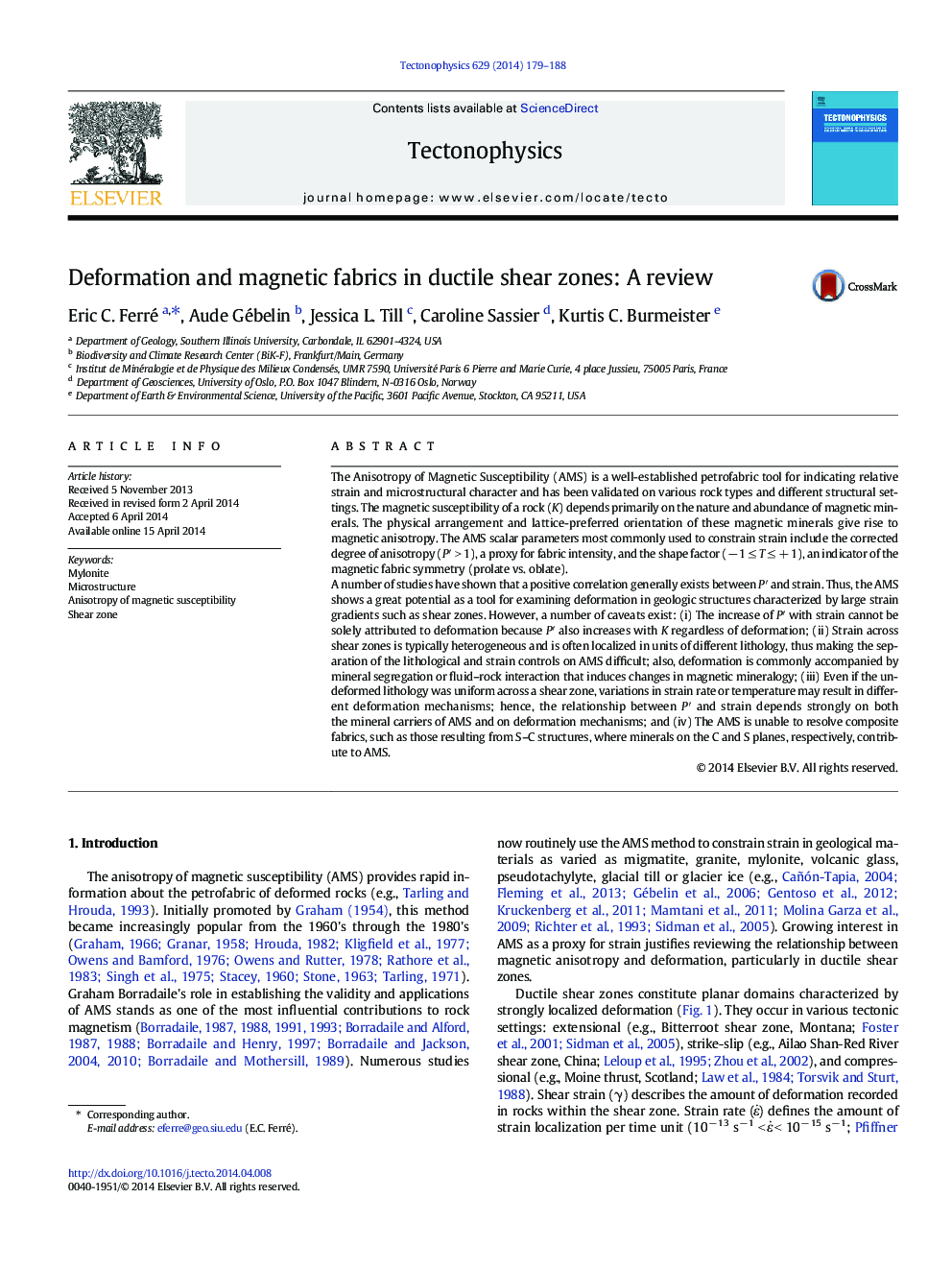| کد مقاله | کد نشریه | سال انتشار | مقاله انگلیسی | نسخه تمام متن |
|---|---|---|---|---|
| 4691908 | 1636762 | 2014 | 10 صفحه PDF | دانلود رایگان |
• AMS is a well-established tool for constraining strain in ductile shear zones.
• A positive correlation generally exists between P' and strain in ductile shear zones.
• The increase of P' with strain cannot be solely attributed to deformation.
• Variations in strain rate, temperature or deformation mechanisms affect the AMS.
• The obliquity between high-field and low-field AMS is a shear sense indicator.
The Anisotropy of Magnetic Susceptibility (AMS) is a well-established petrofabric tool for indicating relative strain and microstructural character and has been validated on various rock types and different structural settings. The magnetic susceptibility of a rock (K) depends primarily on the nature and abundance of magnetic minerals. The physical arrangement and lattice-preferred orientation of these magnetic minerals give rise to magnetic anisotropy. The AMS scalar parameters most commonly used to constrain strain include the corrected degree of anisotropy (P′ > 1), a proxy for fabric intensity, and the shape factor (− 1 ≤ T ≤ + 1), an indicator of the magnetic fabric symmetry (prolate vs. oblate).A number of studies have shown that a positive correlation generally exists between P′ and strain. Thus, the AMS shows a great potential as a tool for examining deformation in geologic structures characterized by large strain gradients such as shear zones. However, a number of caveats exist: (i) The increase of P′ with strain cannot be solely attributed to deformation because P′ also increases with K regardless of deformation; (ii) Strain across shear zones is typically heterogeneous and is often localized in units of different lithology, thus making the separation of the lithological and strain controls on AMS difficult; also, deformation is commonly accompanied by mineral segregation or fluid–rock interaction that induces changes in magnetic mineralogy; (iii) Even if the undeformed lithology was uniform across a shear zone, variations in strain rate or temperature may result in different deformation mechanisms; hence, the relationship between P′ and strain depends strongly on both the mineral carriers of AMS and on deformation mechanisms; and (iv) The AMS is unable to resolve composite fabrics, such as those resulting from S–C structures, where minerals on the C and S planes, respectively, contribute to AMS.
Journal: Tectonophysics - Volume 629, 26 August 2014, Pages 179–188
